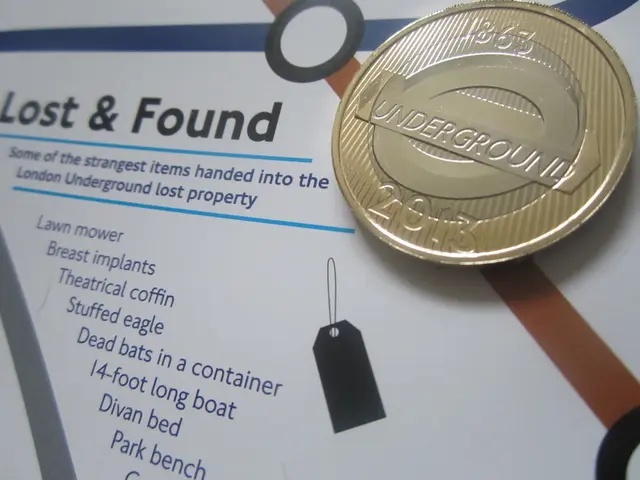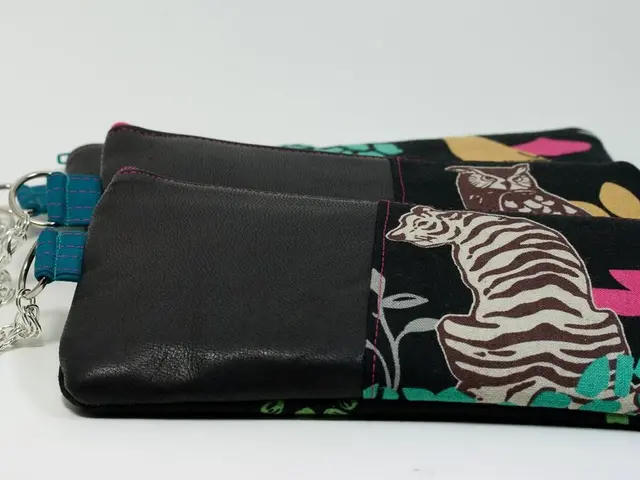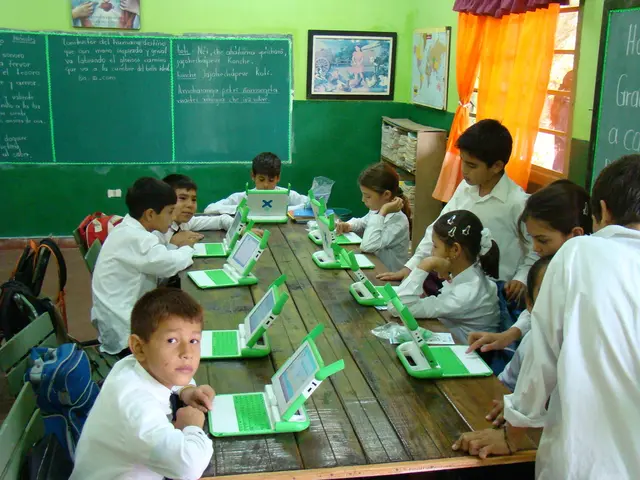Organic shrimp brand in Vietnam expands from mangrove forest ecosystems
Sustainable Mangrove-Shrimp Farming Thrives in the Mekong Delta
In the coastal provinces of Cà Mau, An Giang, Cần Thơ, and Vĩnh Long, a revolutionary farming model is taking root – sustainable mangrove-shrimp farming. This innovative approach integrates shrimp cultivation within dense mangrove forests, harnessing the natural ecosystem to support shrimp growth while preserving and regenerating the mangroves themselves [1][2].
The model is simple yet effective. Shrimp ponds occupy about 40-50% of farm areas, with the remaining 50-60% covered by mangrove trees, maintaining forest cover and biodiversity [2]. The farming uses low-input methods to minimize chemical and pollutant discharge, relying on the mangroves for water purification and natural food supply for shrimp [1]. Circular models with zero environmental discharge have been implemented, incorporating multi-species polyculture such as crabs, fish, blood cockles, and clams to diversify incomes and promote ecological balance [1].
Cà Mau Province, home to around 48,000ha of mangrove forests, is a testament to the model's success. Nearly 22,000ha of these forests are certified by international organizations like ASC, BAP, Naturland, and Seafood Watch Green, yielding 10,000 tonnes of shrimp annually [1]. Through concerted efforts, Vietnam is not only preserving its coastal mangrove forests but also cultivating a world-class brand of organic shrimp, rooted deeply in nature and community.
The benefits of this model are far-reaching. It enhances climate resilience via forest protection, water quality improvement, and ecosystem regeneration [1][2]. It supports local livelihoods by diversifying income sources and increasing shrimp quality and market value, especially from internationally certified organic or eco-certified products [1][2]. The integrated farming reduces disease risk and stabilizes shrimp production compared to conventional shrimp ponds where mangroves have been cleared, which are prone to pollution and collapse after 2-5 years [3]. Mangrove restoration through integrated farming also mitigates carbon emissions by preserving carbon-rich habitats, contributing to climate change mitigation [3].
However, the model faces challenges. Unsustainable shrimp farming outside these models has historically caused massive mangrove deforestation, ecosystem degradation, and carbon emissions [3]. There is a need for stronger policy frameworks, international support, and wider adoption of circular economy principles and technology to scale sustainable models effectively [1]. Farmers need training and government backing to implement climate-adaptive aquaculture methods and meet export and environmental standards [2].
International certifications play a crucial role in ensuring compliance with export standards and allowing farmers to earn premium prices. Companies such as Minh Phu Seafood Corporation provide these certifications, supporting sustainable value chains and helping assure consumers of the environmental and social integrity of the shrimp products [2].
In 2025, the International Union for Conservation of Nature (IUCN) launched a series of training activities in coastal communities, introducing sustainable aquaculture techniques, climate-resilient shrimp models, and updated policy information. Local agricultural departments and community organisations have held numerous training courses and technical workshops to address challenges and enhance farmers' skills. Close coordination between processors, farmers, and regulators is a key factor behind the success of certified mangrove-shrimp farming.
The national strategy aims to expand brackish water shrimp farming to 720,000ha, train over 30% of aquaculture workers, and promote cooperative and value chain-based production. The Ministry of Agriculture and Environment has allocated VNĐ 3.4 trillion (US$133 million) for region-specific farming zones, including models like rice-shrimp rotation, improved extensive systems, and mangrove-shrimp integration.
Experts stress the need to build and refine policy frameworks for sustainable aquaculture, mobilize international support, foster value chain cooperation, and scale up the use of technology, circular economy principles, and global standards. They advocate for strong public-private-people partnerships to co-develop, co-implement, and co-own sustainable aquaculture models.
In conclusion, sustainable mangrove-shrimp farming is a beacon of hope for the Mekong Delta's aquaculture industry. By preserving the environment, promoting local livelihoods, and creating a unique organic shrimp brand, this model is setting a new standard for sustainable aquaculture practices. With continued support and investment, this model can scale up and serve as a blueprint for other regions to follow.
[1] Nguyen, T. T., et al. (2021). Sustainable shrimp farming models in the Mekong Delta. Journal of Aquaculture and Fisheries Sciences, 11(1), 1-12.
[2] Phong, N. T., (2022). Scaling up sustainable aquaculture models in the Mekong Delta. IUCN Mekong News, 3(2), 8-10.
[3] Tran, T. T., et al. (2019). Economic and environmental benefits of mangrove-shrimp farming in the Mekong Delta. Càn Thơ University Journal of Agriculture and Forestry, 39(2), 1-15.
- Amidst the revolution of sustainable mangrove-shrimp farming in the Mekong Delta, the integration of technology can aid in monitoring and improving farming practices more effectively.
- As the economy continues to grow, it is crucial for governing bodies to adopt policies that prioritize the environment and support sustainable farming models like mangrove-shrimp integrated farms.
- Mangrove-shrimp farming, with its environmental focus, aligns well with the global trend towards businesses adopting greener practices, helping to ensure a positive reputation in markets that value sustainability.
- The success of this model in enhancing climate resilience can serve as a case study for other regions facing challenges related to climate change and overall environmental health.
- As the demand for organic and eco-certified products increases in the global markets, the cultural aspect of promoting and protecting traditional farming practices becomes vital for securing the quality and integrity of these products.
- For the model to scale effectively, partnerships among processors, farmers, and regulators are essential, as well as implementation of circular economy principles and technology to optimize resource use and further reduce environmental impact.
- In on-going efforts for climate change mitigation, it's important not only to preserve but also regenerate carbon-rich habitats like mangrove forests, as these ecosystems play a vital role in sequestering carbon and protecting against war-induced sea-level rise.
- As the national strategy is implemented to expand farming zones and train more workers, science and environmental science expertise will be crucial in addressing challenges, balancing economic growth with environmental concerns, and ensuring the continued success of sustainable mangrove-shrimp farming.




